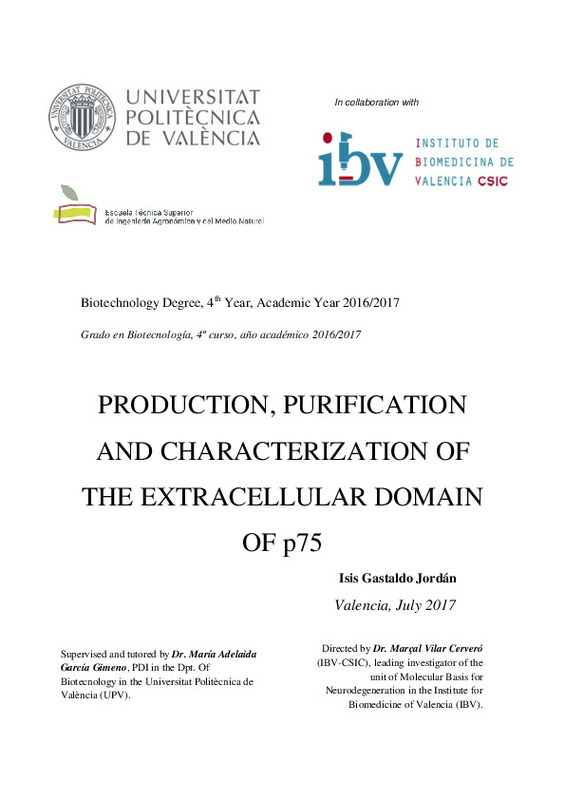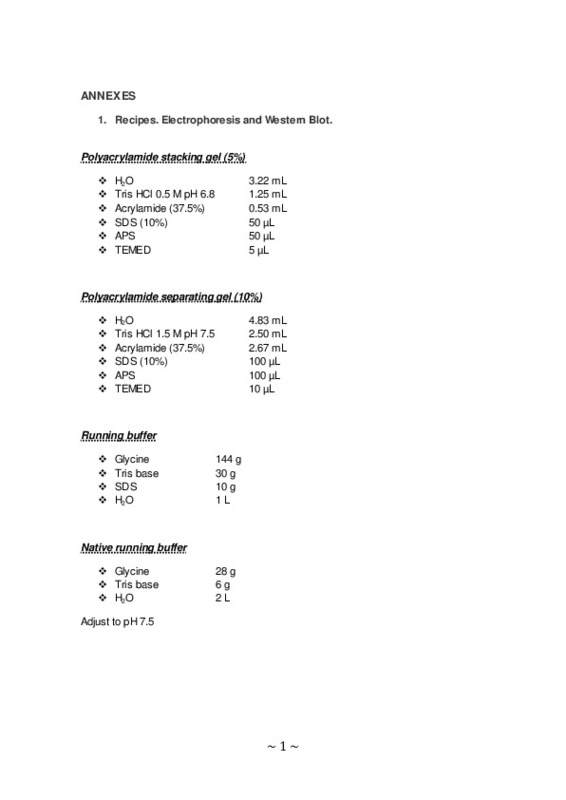JavaScript is disabled for your browser. Some features of this site may not work without it.
Buscar en RiuNet
Listar
Mi cuenta
Estadísticas
Ayuda RiuNet
Admin. UPV
Production, purification and characterization of the extracellular domain of p75
Mostrar el registro completo del ítem
Gastaldo Jordán, I. (2017). Production, purification and characterization of the extracellular domain of p75. http://hdl.handle.net/10251/86521
Por favor, use este identificador para citar o enlazar este ítem: http://hdl.handle.net/10251/86521
Ficheros en el ítem
Metadatos del ítem
| Título: | Production, purification and characterization of the extracellular domain of p75 | |||
| Autor: | Gastaldo Jordán, Isis | |||
| Director(es): | Vilar Cerveró, Marçal | |||
| Entidad UPV: |
|
|||
| Fecha acto/lectura: |
|
|||
| Resumen: |
[EN] The objective of this TFG is to develop a protocol for the purification of the
extracellular domain of the neurotrophin receptor p75, as well as to purify this same
receptor and depending on the results, characterize ...[+]
[ES] El objetivo del TFG es el de desarrollar un protocolo de purificación del
dominio extracelular del receptor de neurotrofinas p75, así como purificar este mismo
receptor y en función de los resultados, caracterizar ...[+]
|
|||
| Palabras clave: |
|
|||
| Derechos de uso: | Reserva de todos los derechos | |||
| Editorial: |
|
|||
| Titulación: |
|
|||
| Tipo: |
|
recommendations
Este ítem aparece en la(s) siguiente(s) colección(ones)
-
ETSIAMN - Trabajos académicos [3555]
Escuela Técnica Superior de Ingeniería Agronómica y del Medio Natural








